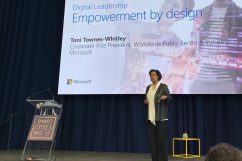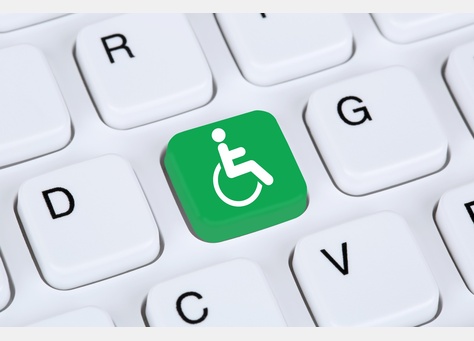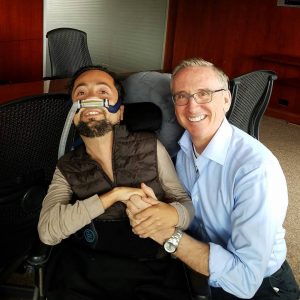Boosting smart city inclusion, Microsoft and partners launch accessibility toolkit
While sensor-enabled and connected cities will drive government forward, private and public sectors agree that making technology and services accessible to those with disabilities is essential.
By Jake Williams MAY 3, 2017 2:22 PM

Cities continue to make strides toward more connected digital services and smart technologies, but could be leaving a large percentage of residents behind, technology leaders attending the Smart Cities NYC conference said on Wednesday.
Companies building smart city technology, and governments implementing it, need to keep the members of their communities who have a disability in mind, said Toni Townes-Whitley, Microsoft’s corporate vice president for worldwide public sector and industry.
“1.2 billion people have some form of a disability,” Townes-Whitley said. “What [are] Microsoft and other companies doing to build with this in mind? We’ve got to address this as a significant group that we design products for, that we hold ourselves accountable to.”
Microsoft, along with the Global Initiative for Inclusive Information and Communication Technologies, released a toolkit at the event, designed to give cities access to the technologies, policies and information they need to include accessibility in the discussion when planning and implementing smart city products.
The toolkit contains four tools — accessibility standards, procurement policies, communication plans and a database of smart city apps and solutions that are already configured with access in mind.
 Toni Townes-Whitley talks about Microsoft’s efforts to promote accessibility at Smart Cities NYC in Brooklyn, New York. (StateScoop)
Toni Townes-Whitley talks about Microsoft’s efforts to promote accessibility at Smart Cities NYC in Brooklyn, New York. (StateScoop)“We need a starter kit for every city around the world on how to do a smart city for all,” Townes-Whitley said. “We want to make this available to all of you so that you can replicate and implement these solutions across these cities.”
Victor Pineda, founder of World Enabled — an educational nonprofit that promotes accessibility for those with disabilities — said cities need to “innovate for inclusion.”
“These trends are about a dramatic urban transformation,” Pineda said. “Globally, smart cities are booming. There’s 1.5 trillion of investments being made by 2020 to upgrade digital services in cities, so this tech boom really needs to take into account all people.”
Filiep Decorte, the officer-in-charge at the New York office of the United Nations Habitat program, said it’s important for cities to think about resident life, and not just flashy technology.
“I always hesitate coming to a smart cities conference where the focus is on ‘smart,’” Decorte said. “To me, the focus is on cities and making those cities more inclusive.”
Miguel Gamiño, New York City’s chief technology officer, said that while the focus on accessibility is important for cities to consider with technology across the board, leaders need to include that approach as one that is included in the design and planning process from the very beginning.
“What’s really important also is to have in the core of what you’re trying to achieve the principles of accessibility,” Gamiño said. “It’s one thing to have it in the core of the things we’re doing, which is important, but if you begin from the point of thinking about digital or digitizing processes or services, you will focus on those as part of the core outcomes that you’re trying to achieve.”
In New York City, Gamiño said that when building services — whether they’re specifically targeted at people with disabilities or not — he and his team sit down with users and ask them what they want.
“The greatest achievements come when you ask what [users] want first,” Gamiño said. “That’s a big thing to think about — sit across the table from your customer and ask them if you’re delivering what they need.”
Those conversations include tech leaders like Gamiño, but also the coders and developers who are building the tools, he said.
“We throw these buzz words around, but I’m talking about this in real terms,” Gamiño said. “Sometimes we had this very complex thing that we thought would be really profound to the marketplace, but when we sat across the table and asked what they wanted, it was actually much more simple than that.”
Accessibility is not new to the digital transformation discussion. In 2015, the National Association of State Chief Information Officers released a series of papers recommending action on accessibility at the state level. The first report called on states to develop policies on accessibility and the second report encouraged states to pressure the private sector to include accessibility in their tools and services.
The state of Georgia is experimenting with voice-controlled devices like Amazon Echo to reach a wider group of residents, while the civic tech and open data movement can also be seen generally transitioning toward increased inclusion and accessibility.
Contact the reporter who wrote this story at [email protected] and follow him on Twitter @JakeWilliamsDC.
Content retrieved from: http://statescoop.com/boosting-smart-city-inclusion-microsoft-and-partners-launch-accessibility-toolkit.
Upcoming Events
There are no upcoming events.



